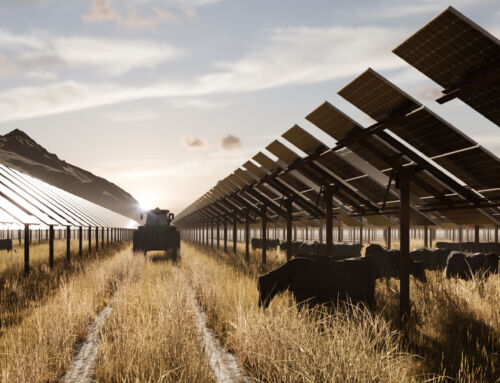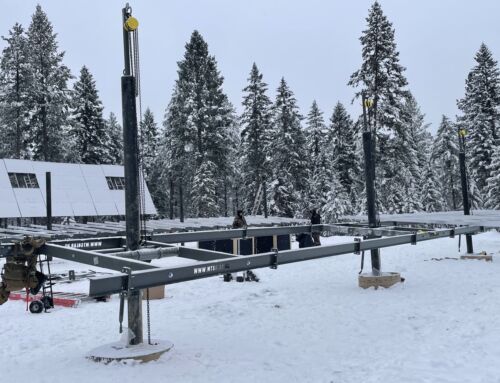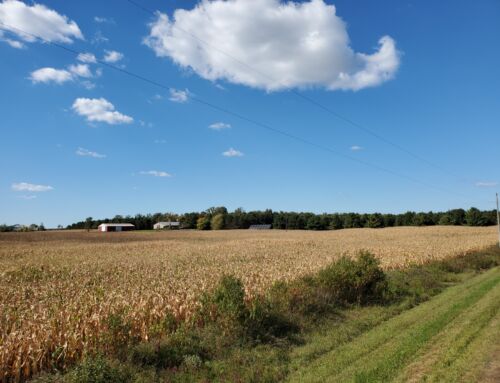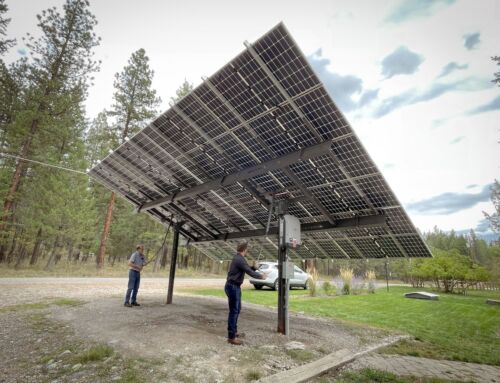Since its introduction, agrivoltaics has been fertile ground for research into numerous energy generation, sustainability, and farming concepts. We take pride in playing our part as a solar racking manufacturer that develops versatile and robust systems for research and agriculture uses.
It’s exciting to see what solar mounts can deliver, not only as power-generating shade structures among crops and livestock but also when they’re leveraged as multifaceted agriculture assets, like the solar mounts at the University of the District of Columbia’s (UDC) Firebird Research Farm.
Firebird Research Farm is home to the UDC’s new “agro-tech” classroom. After opening in November 2024, students at the university’s College of Agriculture, Urban Sustainability, and Environmental Sciences (CAUSES) have been using the classroom laboratories to explore techniques and develop solutions that remove barriers to urban agriculture and empower local DC farmers.
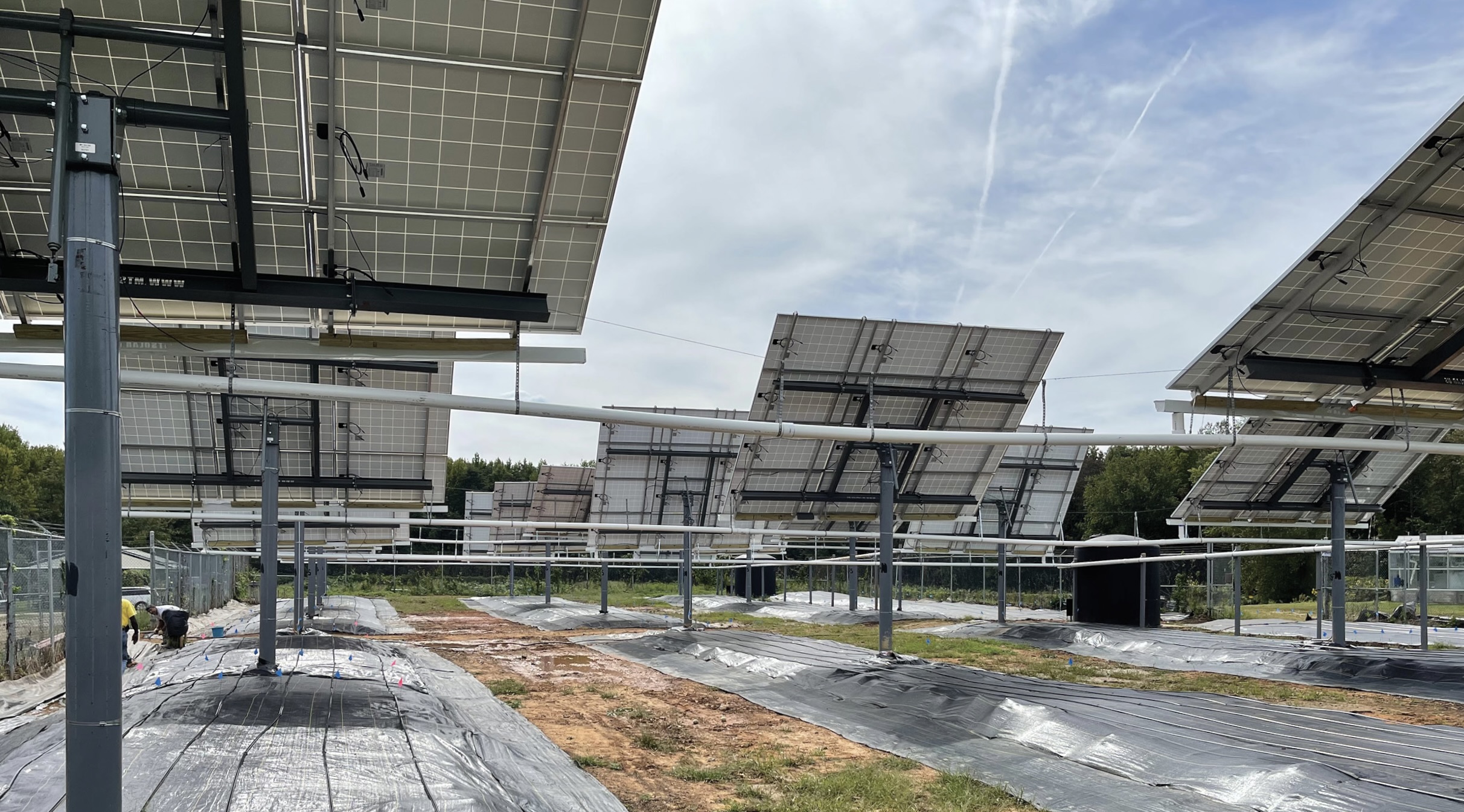
18 single-pole solar mounts power many of Firebird Research Farm's operations. Photo: Metropolitan Solar | Beltsville, MD
Thanks to an installation completed by DC-based Metropolitan Solar, the farm powers many of its operations through solar. A half-acre portion of the 143-acre property in Beltsville, MD hosts 18 single-pole, 12-module MT Solar mounts, which supply clean energy for farming operations and equipment, including a groundwater well.
Apart from meeting these power needs, the system is a key component in a USDA NIFA-sponsored study that could reveal new uses for solar mounts and broaden the sustainability, productivity, and accessibility of agrivoltaics.
Testing Solar’s Potential in a Food-Water-Energy Nexus
The Food-Water-Energy (FEW) Nexus study will examine a broad range of food production, water collection, and resource utilization techniques, including how variations in solar tilt angles affect crop health and growing conditions. While other agrivoltaics studies have looked at these factors, the effects have not yet been thoroughly examined in the DC region.

In addition to powering the farm's groundwater well, the solar mounts support a drip irrigation system. Photo: Metropolitan Solar | Beltsville, MD
Even more novel is the project’s use of a mount-integrated drip irrigation system. The system will enable researchers to explore the effects of solar mount angles on rainwater collection and crop watering. Through a network of pipes installed along the lower edge of each mount, the solar arrays function as rainwater catchment areas. A solar-powered pump controls the flow and distribution of water for immediate crop watering or collection into cisterns for subsequent irrigation requirements.
The drip irrigation system will also be used to create protected micro-climates for testing soil moisture retention and the growth of high-value specialty crops. The conditions and crop effects will be measured over several years to determine better crop-growing practices, irrigation methods, and other techniques for countering environmental extremes and optimizing resource use.
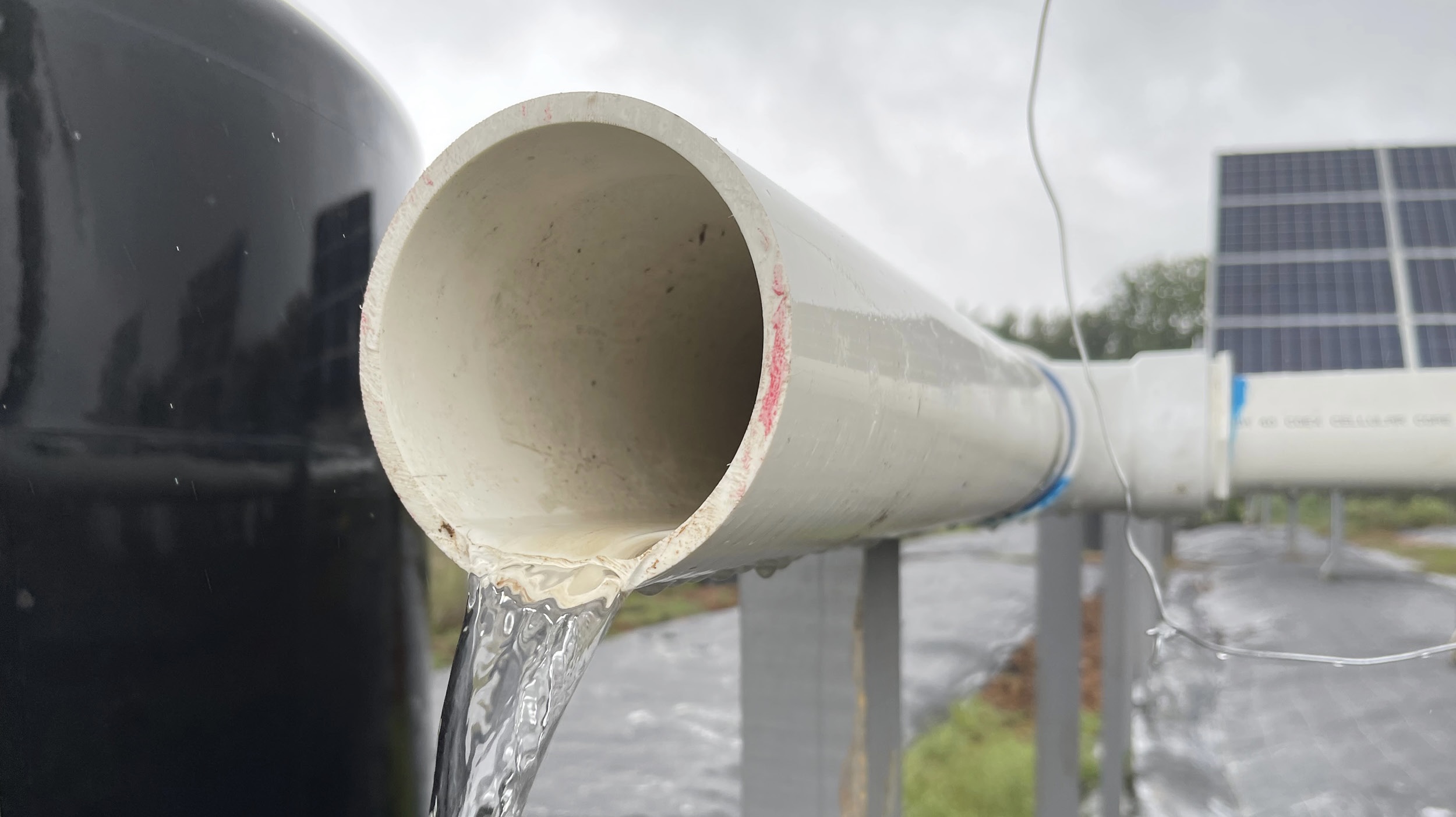
The solar mount irrigation system will contribute to micro-climates for soil moisture tests and specialty crop growth. Photo: Metropolitan Solar | Beltsville, MD
Per the UDC project summary, using solar hardware as a means of rainwater harvesting has not been well researched. By exploring the viability of a food-water-energy closed loop system, the researchers intend to develop guidelines for urban and commercial farming applications, including recommendations on solar angles that maximize rainwater collection, food production, and energy output.
How Solar Could Advance Agriculture in More Places
The findings from this multifaceted project could advance agrivoltaics systems in traditional agricultural spaces and solve pressing issues affecting the industry, such as dwindling freshwater resources due to extreme droughts and other effects of climate change.
But, as noted in the study’s objectives, the methods developed through its findings will prioritize solutions for farming in urban areas and improving access to fresh, locally-grown food. This aligns with the UDC’s CAUSE’s broader mission to make city farming more feasible, sustainable, and impactful for communities.
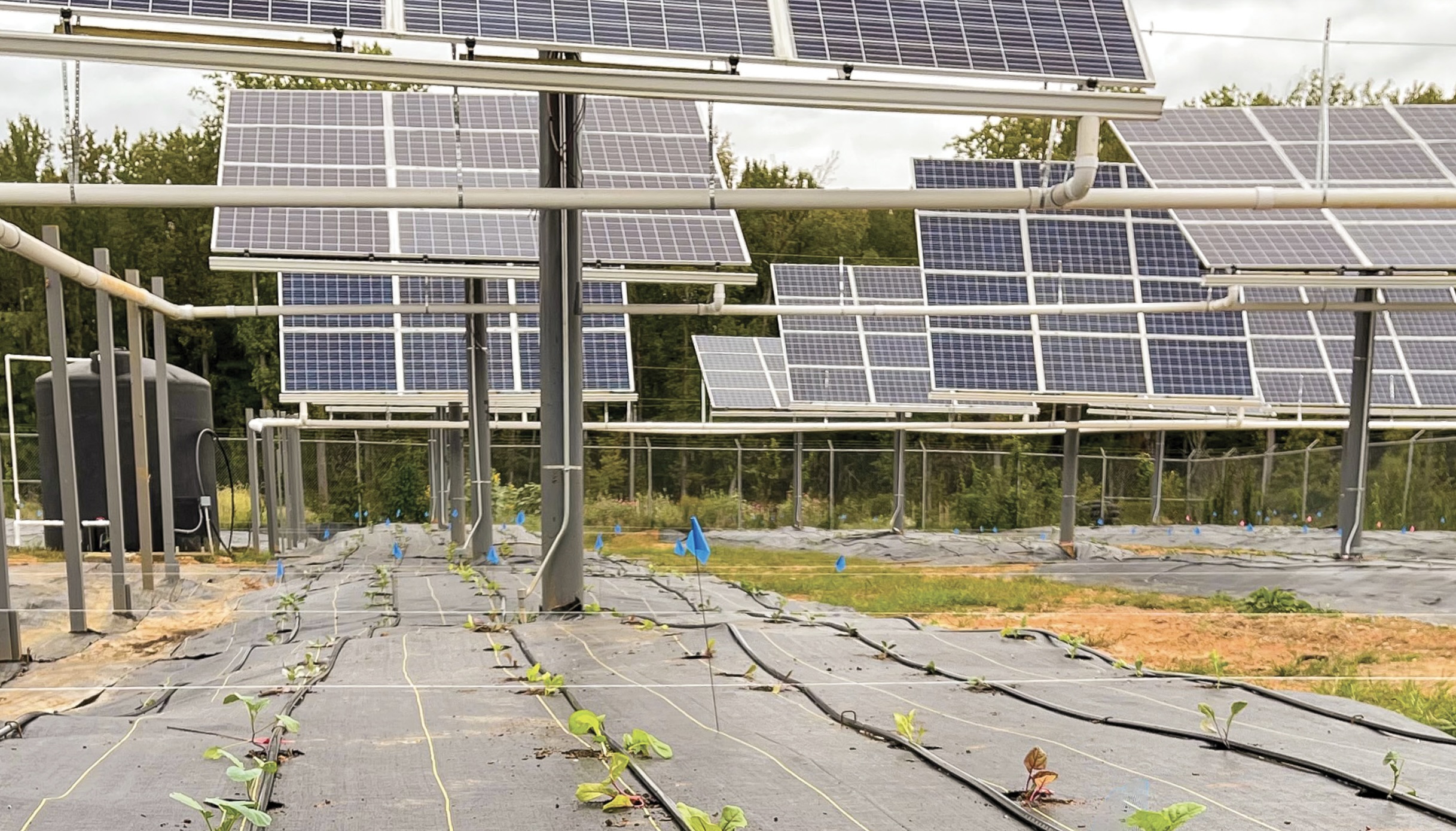
Crops, watering systems, and sustainable power generation work together to test new agrivoltaics concepts. Photo: Metropolitan Solar | Beltsville, MD
By maximizing and diversifying the capabilities of solar mounts with irrigation and defining techniques that reap the highest gains from limited spaces, the FEW system could make agriculture more adaptable. Per the study, identifying new agricultural and land usability improvements will be necessary to respond to rapid urbanization, increased demand for nutritionally rich foods, and other challenges.
If you’re involved in solar and farming and want to learn how MT Solar mounts fit into research like the study in this article, reach out to us. We can help you design a system that furthers your project.
Photo: Metropolitan Solar | Beltsville, MD
MT Solar Works With Researchers
If you’d like to use our solar mounts for your research project, let us know.

